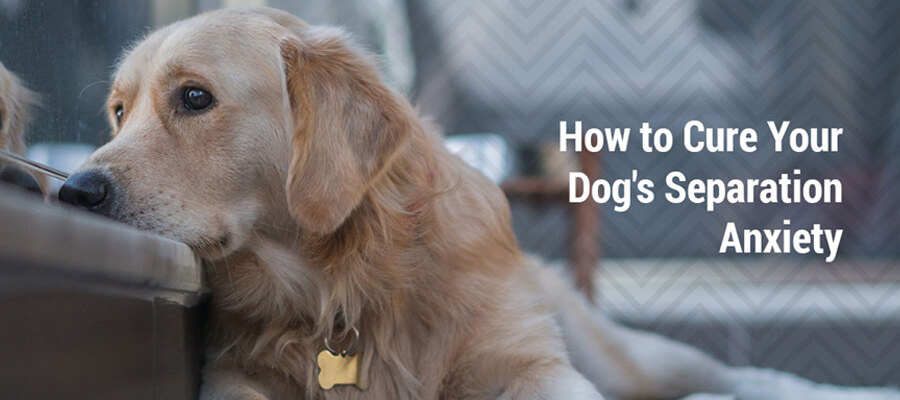
How to Deal with Separation Anxiety in Puppies
"How to Deal with Separation Anxiety in Puppies: Effective Strategies for Success"
Introduction
Bringing a new puppy into your home is a joyful experience, but it can also come with challenges, one of which is separation anxiety. This condition occurs when puppies become distressed when left alone or separated from their owners. Understanding how to recognize and address separation anxiety is essential for your puppy's well-being and can help foster a positive environment for both of you. In this guide, we’ll explore the signs of separation anxiety, its causes, and effective strategies to help your puppy feel more secure when you’re not around.
Recognizing the Signs of Separation Anxiety
Before you can address separation anxiety, it’s important to identify its signs. Common symptoms include:
- Excessive Barking or Whining: Your puppy may vocalize more than usual when you leave or prepare to leave.
- Destructive Behavior: Chewing furniture, scratching doors, or digging may occur as a way to cope with anxiety.
- Pacing or Restlessness: An anxious puppy may pace back and forth or seem unable to settle down.
- House Soiling: If your puppy has been house-trained but starts having accidents when left alone, it may be a sign of anxiety.
- Clinginess: Puppies may follow you from room to room or become overly attached when you’re home.
Understanding the Causes of Separation Anxiety
Several factors can contribute to a puppy developing separation anxiety:
- Early Life Experiences: Puppies that were taken from their mothers too early or have had traumatic experiences may struggle with separation.
- Lack of Socialization: Insufficient exposure to different environments and situations can make puppies more anxious when left alone.
- Changes in Routine: Major changes, such as moving to a new home or changes in family dynamics, can trigger anxiety.
- Boredom or Lack of Stimulation: Puppies with excess energy or insufficient mental stimulation may exhibit anxiety-related behaviors.
Strategies to Help Your Puppy Cope
Fortunately, there are several effective strategies to help your puppy overcome separation anxiety:
Essentials for Your Newly Adopted Pet
Welcoming a shelter pet into your life is a beautiful journey. Here are some handpicked items to help your new friend feel safe, loved, and right at home:
-
Gradual Desensitization
- Short Departures: Start with short absences, leaving your puppy alone for just a few minutes at a time. Gradually increase the duration as they become more comfortable.
- Practice Leaving: Make a habit of leaving the room for short periods, even when your puppy is not anxious. This helps them learn that you will return.
-
Create a Safe Space
- Designate a Comfort Zone: Set up a cozy area in your home where your puppy feels safe, such as a crate or a quiet room. Include their bed, toys, and an item with your scent.
- Use Calming Products: Consider using calming sprays, pheromone diffusers, or anxiety wraps to help soothe your puppy in their safe space.
-
Establish a Routine
- Consistent Schedule: Establish a consistent daily routine that includes feeding, potty breaks, playtime, and grooming. Predictability can help reduce anxiety.
- Departure and Arrival Rituals: Create low-key routines when leaving and returning home to avoid heightening your puppy's anxiety. Avoid long goodbyes or enthusiastic hellos.
-
Provide Mental and Physical Stimulation
- Regular Exercise: Ensure your puppy gets plenty of physical activity through walks, playtime, and training sessions. A tired puppy is less likely to feel anxious.
- Interactive Toys: Use puzzle toys, treat-dispensing toys, or chews to keep your puppy occupied while you’re away.
-
Use Positive Reinforcement
- Reward Calm Behavior: When you leave or return home, reward your puppy for being calm. Treats, praise, and playtime can reinforce positive behavior.
- Training Commands: Teach basic commands like “sit,” “stay,” or “place” to encourage your puppy to relax when you’re preparing to leave.
-
Consider Crate Training
- Safe and Comfortable: If your puppy is crate trained, their crate can provide a sense of security. Ensure it’s a positive space filled with their favorite toys and bedding.
- Gradual Introduction: Introduce your puppy to the crate gradually, using treats and praise to create positive associations.
-
Consult a Professional
- Seek Professional Help: If your puppy’s separation anxiety persists or worsens, consider consulting a professional dog trainer or behaviorist. They can provide tailored strategies and support.
When to Seek Veterinary Help
In some cases, separation anxiety may be severe enough to require veterinary intervention. If your puppy displays extreme signs of distress, such as excessive destructive behavior or self-harm, consult your veterinarian. They may recommend behavioral therapies, training programs, or even medication to help your puppy cope.
Conclusion
Dealing with separation anxiety in puppies can be challenging, but with patience, understanding, and the right strategies, you can help your furry friend feel more secure when you’re not around. By gradually desensitizing them to your departures, creating a safe environment, providing mental and physical stimulation, and using positive reinforcement, you’ll foster a sense of comfort and confidence in your puppy. Remember that every puppy is unique, so be patient and flexible as you work through the process together. With time and love, you can help your puppy overcome their anxiety and enjoy a happy, healthy life by your side.
Affiliate Products
We may earn a small commission when you shop through our links — it helps us keep sharing love and care for every dog out there, at no extra cost to you.
Up to 75% Discount

Dog Collar with Health Monitoring
BUY NOW »
Up to 55% Discount

Luxury Faux Furhuge Napping Bed
BUY NOW »

